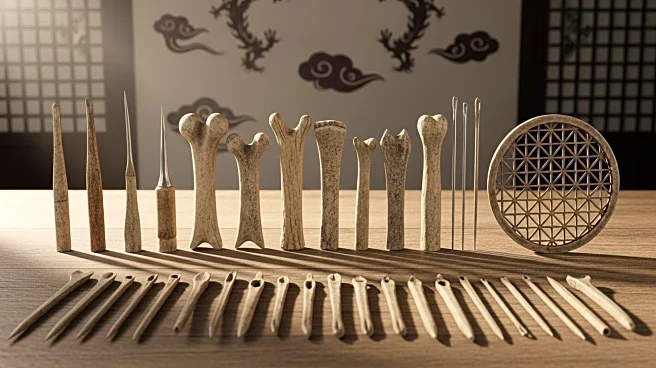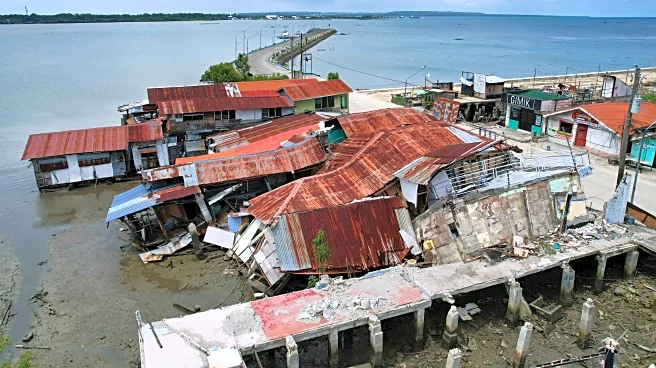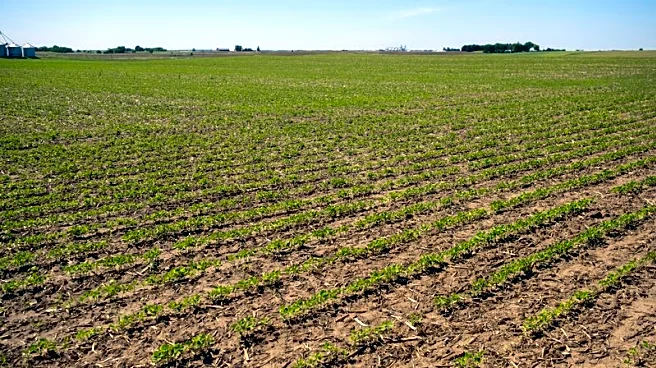What's Happening?
A recent study led by Dr. Sawada, published in Scientific Reports, has uncovered evidence of systematic human bone modification within the Neolithic Liangzhu culture in China. The research surveyed 183 human bones, identifying 52 as worked bones, marking the first known instance of such practices in Neolithic China. The Liangzhu culture, which thrived around 5,300 to 4,500 years ago in the Yangzi River Delta, was characterized by large urban societies with significant social stratification. The worked bones, often found discarded in canals and moats, include skull cups, mask-like facial skulls, and limb bones, suggesting a standardized production process. The study indicates that these bones were not obtained through violence but were likely collected post-decomposition, reflecting a shift in how the dead were perceived in larger urban societies.
Why It's Important?
The discovery of worked human bones in the Liangzhu culture provides insight into the social and cultural dynamics of early urban societies in China. It suggests a transformation in social bonds and perceptions of the dead, possibly due to urbanization. The lack of symbolic privilege associated with these bones indicates a shift from traditional ancestor worship to viewing the dead as resources. This finding contributes to understanding the evolution of social structures and cultural practices in ancient civilizations, highlighting the impact of urbanization on societal norms and relationships.
What's Next?
Further research may explore the implications of these findings on the understanding of Neolithic societies and their cultural practices. Archaeologists and anthropologists might investigate similar practices in other ancient cultures to compare social transformations due to urbanization. Additionally, the study could prompt discussions on the ethical considerations of human remains in archaeological research, influencing future methodologies and interpretations.
Beyond the Headlines
The study raises questions about the ethical treatment of human remains in archaeological contexts, challenging modern perceptions of dignity and respect for the deceased. It also highlights the role of urbanization in altering cultural practices, offering a historical perspective on contemporary societal changes. The findings may influence future archaeological approaches to studying ancient societies, emphasizing the need for sensitivity and ethical considerations.












